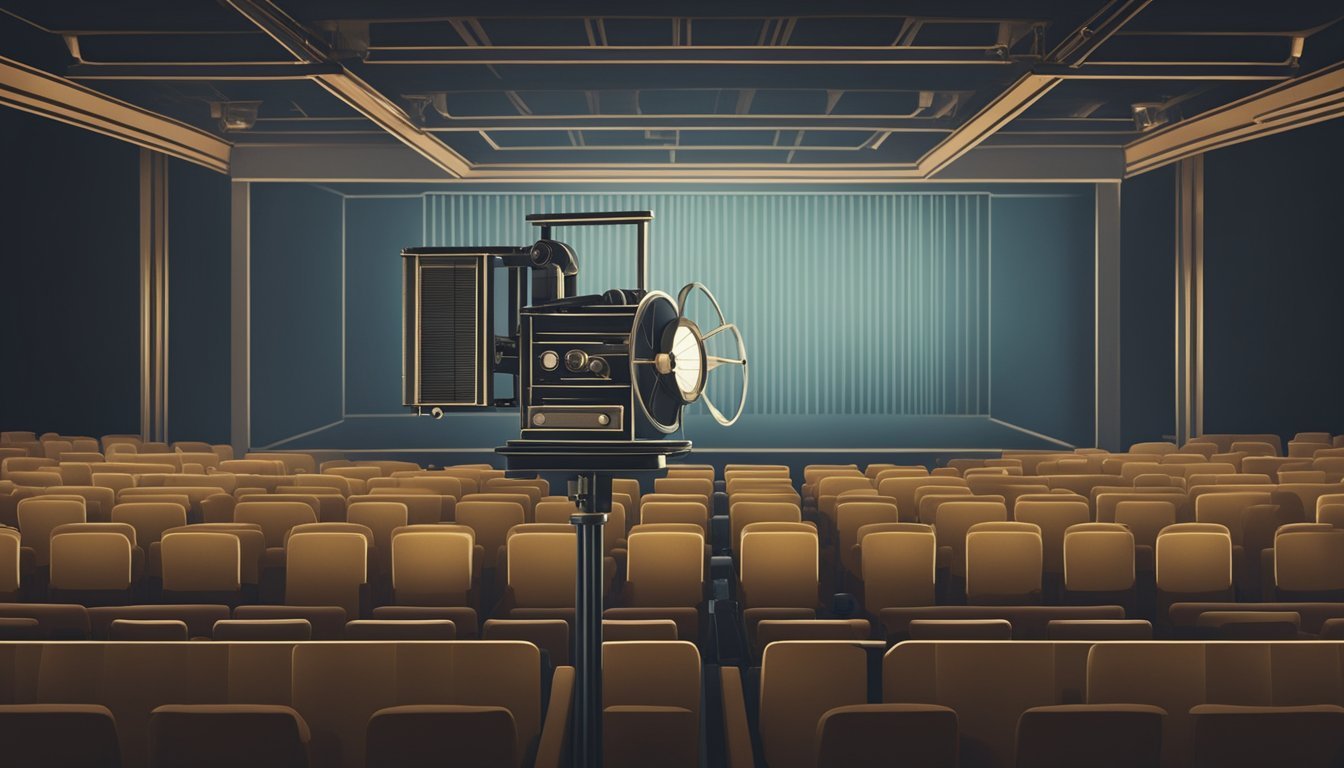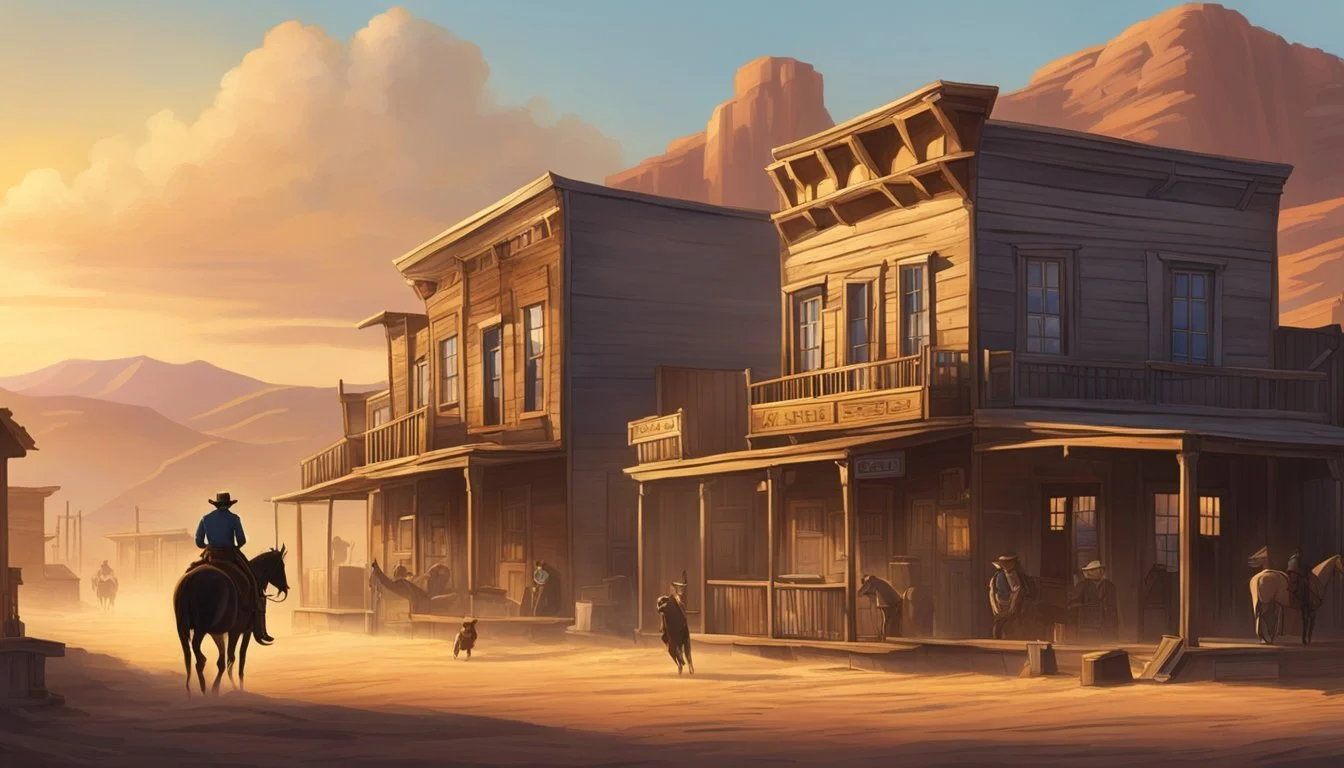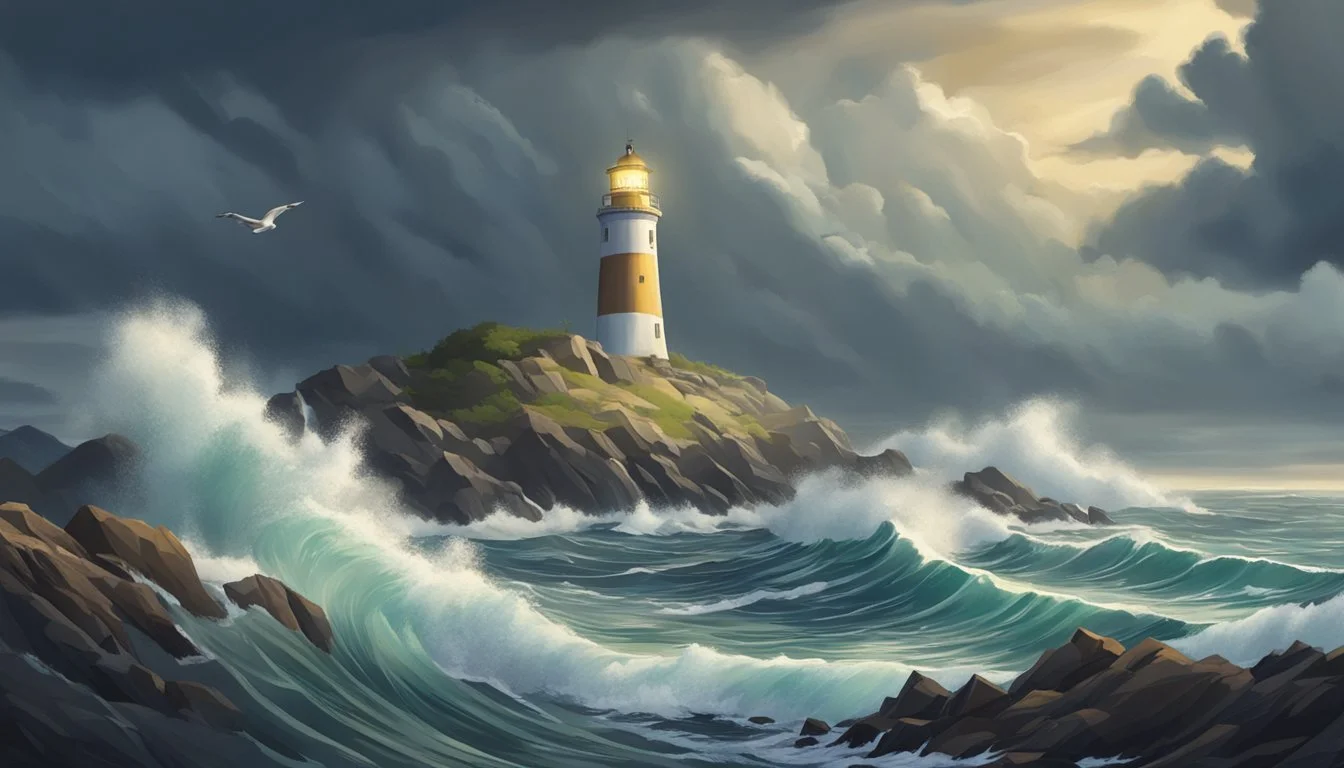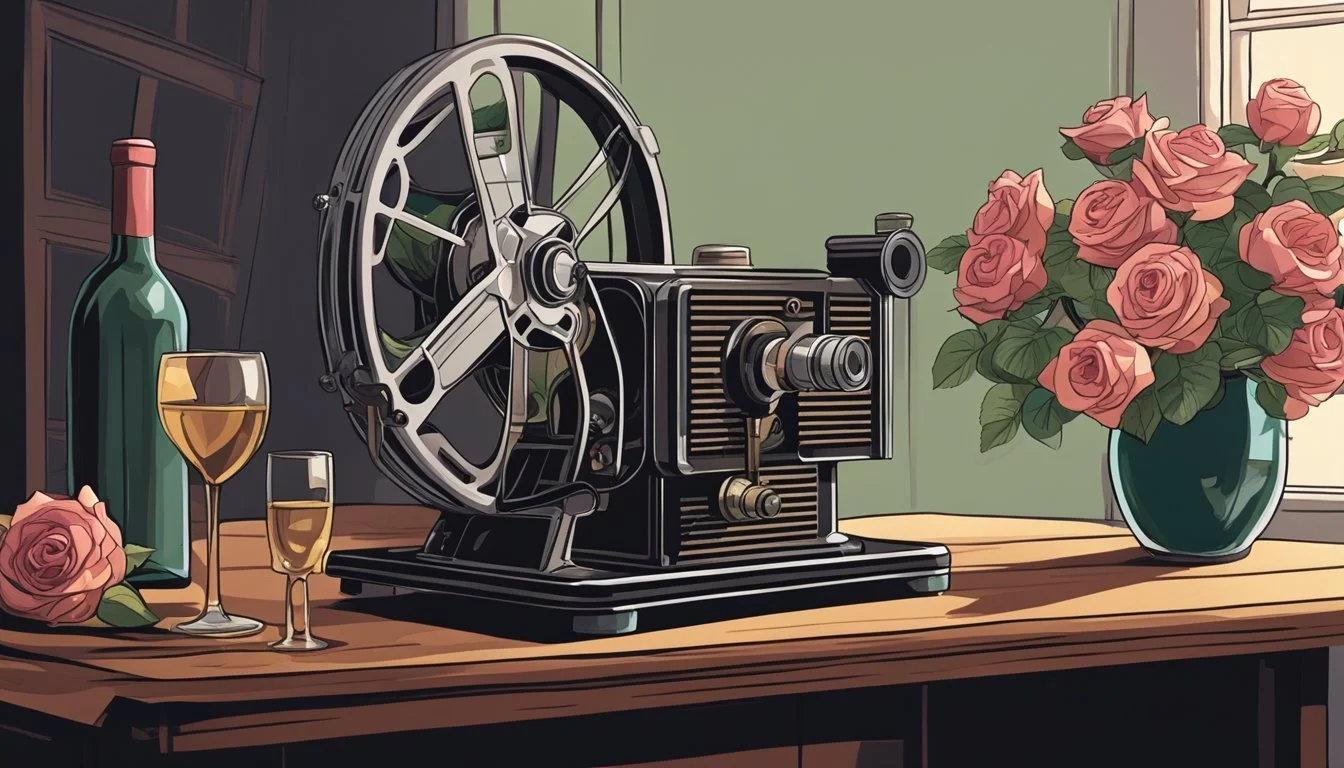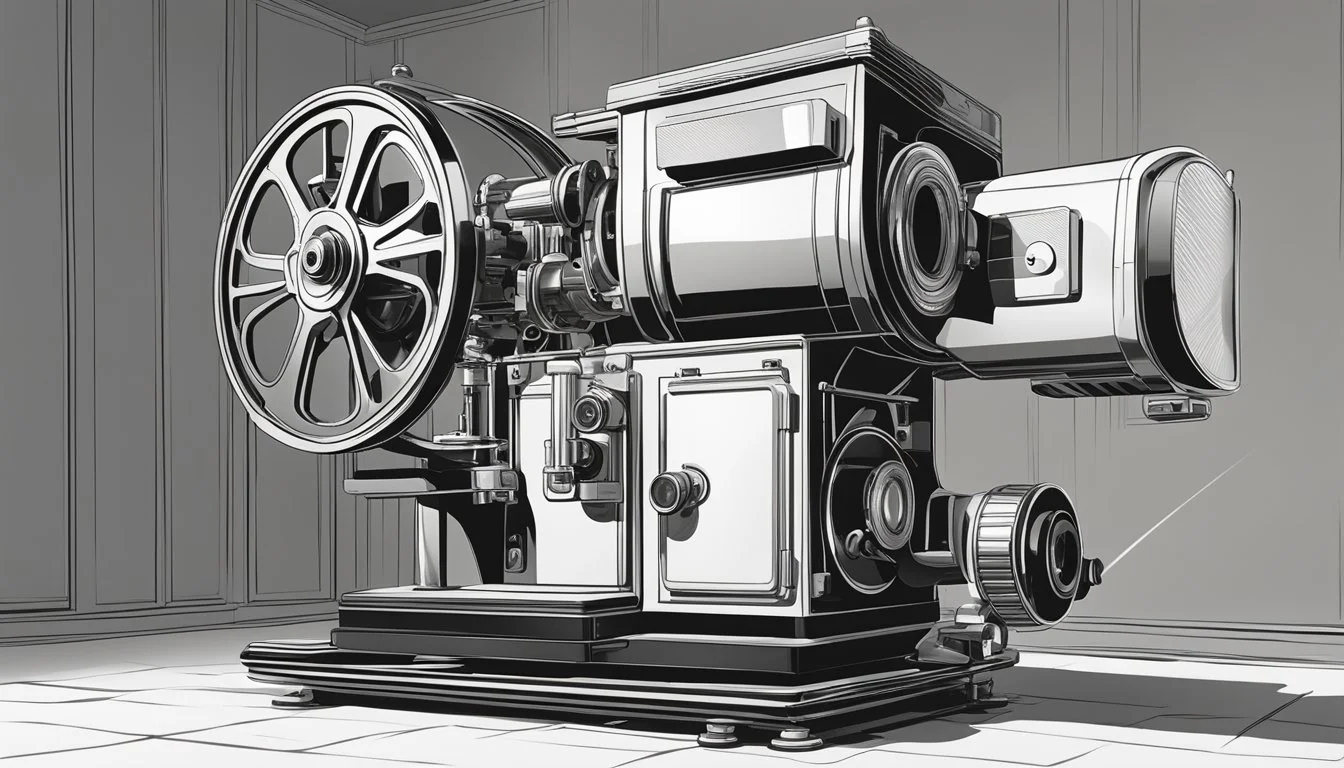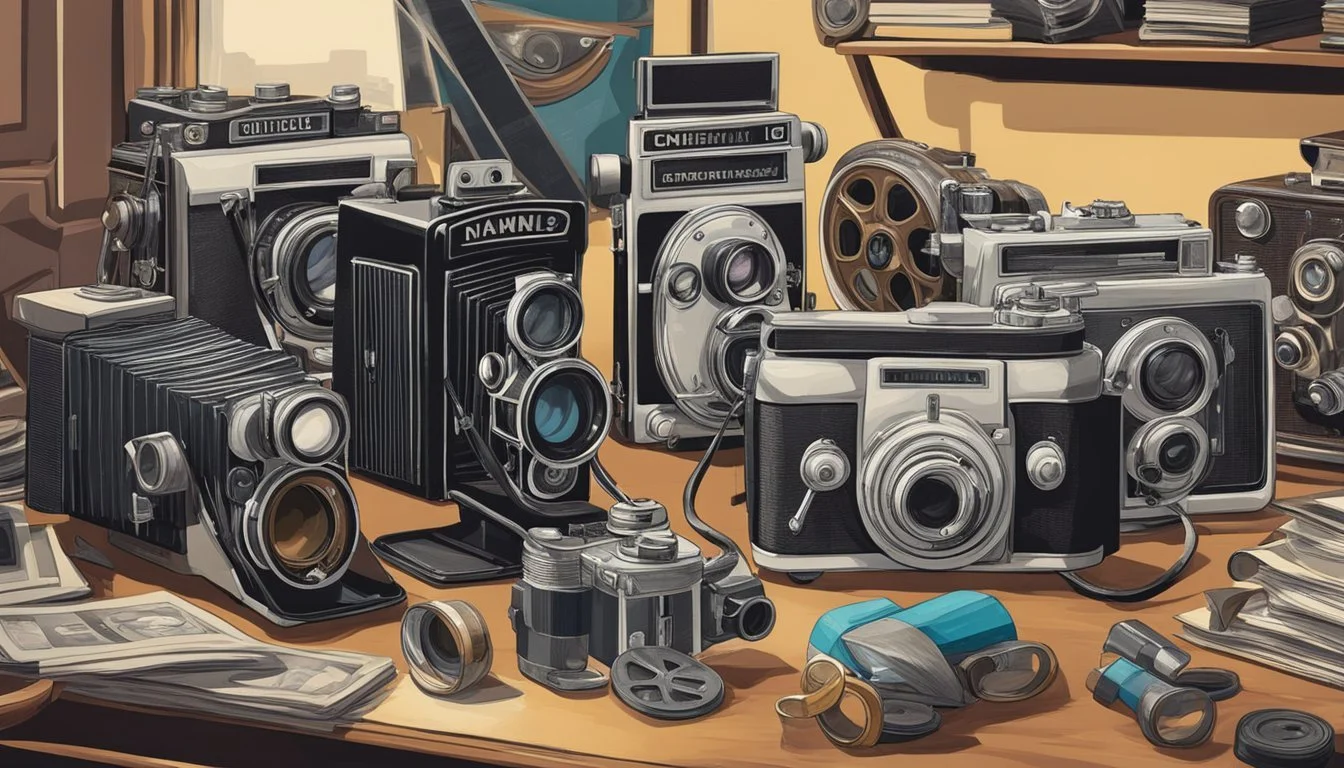Top Documentaries of 1962
Essential Viewing from a Landmark Year in Film
The year 1962 marked a significant period in documentary filmmaking. As the world underwent rapid social and cultural changes, documentarians captured these transformations through their lenses, providing unique insights into the human experience.
Documentary films from 1962 offer viewers a window into the pivotal events and societal shifts of that time. These works not only serve as historical records but also showcase the evolving techniques and approaches in non-fiction storytelling. From political upheavals to artistic revolutions, the documentaries of 1962 continue to resonate with audiences today, offering valuable perspectives on a dynamic era.
1) The Man Who Shot Liberty Valance (1962)
"The Man Who Shot Liberty Valance" is a classic Western directed by John Ford. The film stars John Wayne and James Stewart in leading roles, with Lee Marvin portraying the menacing outlaw Liberty Valance.
Set in the Old West, the story follows a lawyer named Ransom Stoddard (Stewart) who arrives in a small town and becomes entangled in a conflict with the ruthless Liberty Valance. The narrative explores themes of law versus violence and the myths of the American frontier.
The film is notable for its exploration of how legends are created and perpetuated. It famously coined the phrase, "When the legend becomes fact, print the legend," which encapsulates its central theme.
Ford's direction brings a stark, almost noir-like quality to the Western genre. The black-and-white cinematography adds to the film's somber tone and reflective nature.
"The Man Who Shot Liberty Valance" is considered one of Ford's masterpieces and a seminal work in the Western genre. It continues to be studied and admired for its complex characters and nuanced portrayal of the American West.
2) Lawrence of Arabia (1962)
Lawrence of Arabia is a historical epic directed by David Lean. The film chronicles the experiences of T.E. Lawrence, a British officer who played a pivotal role in the Arab Revolt against the Ottoman Empire during World War I.
Peter O'Toole delivers a commanding performance as Lawrence, capturing the complex nature of the enigmatic figure. The stellar cast includes Alec Guinness, Anthony Quinn, and Omar Sharif.
The film's cinematography is breathtaking, with sweeping desert vistas and intricate battle sequences. Maurice Jarre's iconic musical score enhances the grandeur of the visuals, creating an immersive experience.
Lawrence of Arabia received critical acclaim and commercial success. It won seven Academy Awards, including Best Picture and Best Director. The film's influence on cinema has been long-lasting.
At nearly four hours long, the movie offers a deep exploration of Lawrence's character and the geopolitical complexities of the era. It balances personal drama with large-scale historical events.
The film's themes of identity, loyalty, and the consequences of imperialism remain relevant today. Lawrence of Arabia continues to be celebrated for its artistic merit and historical significance.
More information on Lawrence of Arabia
3) To Kill a Mockingbird (1962)
To Kill a Mockingbird is a critically acclaimed American drama film directed by Robert Mulligan. Based on Harper Lee's Pulitzer Prize-winning novel, the film stars Gregory Peck as Atticus Finch, a lawyer in Depression-era Alabama.
The story unfolds through the eyes of Finch's young daughter Scout, played by Mary Badham. It explores themes of racial injustice and moral growth as Finch defends a Black man falsely accused of rape.
The film's portrayal of childhood innocence and its powerful message against prejudice resonated with audiences. Gregory Peck's performance as Atticus Finch earned him an Academy Award for Best Actor.
To Kill a Mockingbird received widespread critical acclaim and commercial success. It won three Academy Awards and has since been recognized as a classic of American cinema.
The film's exploration of racial tensions and social inequality in the American South remains relevant and impactful decades after its release.
4) The Longest Day
"The Longest Day" (1962) is a groundbreaking war film that depicts the events of D-Day during World War II. It stands out for its ambitious scope and attention to historical accuracy.
The film features an all-star ensemble cast, including John Wayne, Robert Mitchum, and Henry Fonda. It presents multiple perspectives, showing both Allied and German viewpoints of the Normandy invasion.
Directed by a team of filmmakers, "The Longest Day" uses a documentary-style approach to storytelling. This technique enhances the film's realism and immersive quality.
The movie's black-and-white cinematography contributes to its stark, authentic feel. It effectively captures the chaos and intensity of the battlefield.
"The Longest Day" received critical acclaim and won two Academy Awards. Its meticulous recreation of D-Day events has made it a valuable historical resource.
More information on "The Longest Day" (IMDb)
5) The Miracle Worker
The Miracle Worker (1962) depicts the remarkable true story of Helen Keller and her teacher Anne Sullivan. Directed by Arthur Penn, this powerful film showcases the struggle to teach a young deaf and blind girl how to communicate.
Anne Bancroft delivers a stunning performance as the determined Sullivan, while Patty Duke portrays the young Helen Keller with raw intensity. Their on-screen dynamic is both heart-wrenching and inspiring.
The film's most memorable scene occurs when Sullivan finally breaks through to Helen, teaching her the concept of language through sign language and touch. This pivotal moment is portrayed with profound emotional impact.
Penn's direction emphasizes the physical and emotional challenges faced by both teacher and student. The black-and-white cinematography adds to the stark, visceral nature of their journey.
The Miracle Worker received widespread critical acclaim and won two Academy Awards. Bancroft and Duke both took home Oscars for their performances, cementing the film's place in cinematic history.
More information on The Miracle Worker (1962)
6) Sanjuro (1962)
Sanjuro is a Japanese jidaigeki film directed by Akira Kurosawa. It serves as a sequel to Kurosawa's earlier work, Yojimbo, released the previous year.
The film stars Toshiro Mifune as the titular character, a wandering ronin who assists a group of young samurai. Sanjuro guides these idealistic warriors in their efforts to root out corruption within their clan.
Kurosawa's direction showcases his masterful composition and pacing. The film blends elements of drama, comedy, and action, creating a multifaceted viewing experience.
Mifune's performance as Sanjuro is particularly noteworthy. He portrays the character with a mix of gruffness and wit, often contrasting sharply with the more formal young samurai he aids.
While not a documentary, Sanjuro offers insights into samurai culture and societal dynamics of feudal Japan. It explores themes of honor, deception, and the nature of heroism.
More information about Sanjuro
7) Cape Fear
Cape Fear (1962) is a psychological thriller directed by J. Lee Thompson. The film stars Gregory Peck as Sam Bowden, a lawyer whose family is stalked by Max Cady, a violent ex-convict played by Robert Mitchum.
Based on John D. MacDonald's novel "The Executioners," the movie explores themes of revenge and justice. Cady seeks retribution against Bowden for his role in securing Cady's conviction years earlier.
The film's tense atmosphere is enhanced by its black-and-white cinematography and Bernard Herrmann's memorable score. Cape Fear received critical acclaim for its suspenseful plot and strong performances, particularly Mitchum's portrayal of the menacing Cady.
Thompson's direction creates a sense of escalating danger as Cady's threats become increasingly real. The movie's climax, set on the titular Cape Fear River, is a nail-biting confrontation between Bowden and his tormentor.
Cape Fear has left a lasting impact on the thriller genre and was remade in 1991 by Martin Scorsese. The original 1962 version remains a classic example of psychological suspense in cinema.
More information on Cape Fear (1962)
8) Days of Wine and Roses
Days of Wine and Roses (1962) is a powerful drama directed by Blake Edwards. The film stars Jack Lemmon and Lee Remick as Joe Clay and Kirsten Arnesen, a couple whose lives are devastated by alcoholism.
Joe, a public relations executive, introduces Kirsten to drinking. Their relationship quickly becomes centered around alcohol consumption. As their addiction worsens, it takes a toll on their marriage and careers.
The film explores the destructive nature of alcoholism with stark realism. It portrays the couple's struggles with dependency and their attempts at recovery. Charles Bickford plays Kirsten's father, who tries to help the couple overcome their addiction.
Jack Lemmon and Lee Remick deliver raw, emotional performances that earned them both Academy Award nominations. The film's haunting theme song, composed by Henry Mancini and Johnny Mercer, won an Oscar for Best Original Song.
Days of Wine and Roses stands out for its unflinching depiction of addiction. It avoids glamorizing alcohol use, instead showing its harsh consequences. The film remains a poignant portrayal of the challenges faced by those struggling with substance abuse.
9) Mutiny on the Bounty (1962)
"Mutiny on the Bounty" is an epic historical drama directed by Lewis Milestone. The film stars Marlon Brando as Fletcher Christian and Trevor Howard as Captain William Bligh.
Set in 1787, the movie recounts the true story of a mutiny aboard the HMS Bounty. It depicts the harsh conditions imposed by Captain Bligh that led to the rebellion led by first officer Christian.
The film is notable for its stunning Technicolor cinematography and exotic Tahitian locations. It features impressive performances from its star-studded cast, including Richard Harris and Hugh Griffith.
"Mutiny on the Bounty" is a remake of the 1935 film of the same name. Both are based on the novel by Charles Nordhoff and James Norman Hall.
Despite production difficulties, the film remains a classic depiction of this infamous historical event. It offers a dramatic portrayal of conflict, power, and survival at sea.
10) La Jetée (1962)
La Jetée is a groundbreaking French short film directed by Chris Marker. Running just 28 minutes, this science fiction masterpiece is composed almost entirely of still photographs.
The film tells the story of a post-apocalyptic world where scientists experiment with time travel. A man is sent back in time to seek help for the present, leading to a haunting exploration of memory and fate.
Marker's innovative use of still images creates a unique cinematic experience. The narrative unfolds through a series of carefully curated photographs, accompanied by narration and minimal sound effects.
La Jetée's influence extends far beyond its runtime. It inspired Terry Gilliam's 1995 film "12 Monkeys" and has been celebrated for its philosophical depth and artistic vision.
The film won the Prix Jean Vigo for short film, cementing its place in cinema history. La Jetée continues to captivate audiences with its thought-provoking narrative and distinctive visual style.
Impact Of 1960s Documentaries
The 1960s marked a transformative period for documentary filmmaking, revolutionizing both the style and substance of the genre. This decade saw documentaries gain wider cultural significance and push the boundaries of cinematic techniques.
Cultural Influence
Documentaries of the 1960s played a crucial role in shaping public opinion and social awareness. Films like "Salesman" (1969) by the Maysles brothers and Charlotte Zwerin offered intimate portrayals of everyday American life. These works shed light on societal issues and challenged viewers' perspectives.
The rise of direct cinema and cinéma vérité styles allowed filmmakers to capture reality with unprecedented immediacy. This approach resonated strongly with audiences, fostering a deeper connection to the subjects on screen.
Many documentaries from this era tackled pressing social and political topics. They became powerful tools for activism and education, influencing public discourse on civil rights, the Vietnam War, and other pivotal issues of the time.
Advancements In Filmmaking Techniques
The 1960s saw significant innovations in documentary filmmaking techniques. Lighter, more portable camera equipment enabled filmmakers to capture events as they unfolded, leading to more spontaneous and authentic footage.
Synchronous sound recording became more prevalent, allowing for seamless integration of audio and visuals. This technological advancement enhanced the realism and impact of documentaries.
Experimental editing techniques emerged, challenging traditional narrative structures. Filmmakers like D.A. Pennebaker in "Dont Look Back" (1967) used jump cuts and non-linear storytelling to create more dynamic and engaging documentaries.
These technical innovations expanded the creative possibilities for documentarians, setting new standards for the genre that continue to influence filmmaking today.
Notable Filmmakers Of 1962
1962 saw the emergence of several influential documentary filmmakers who pushed the boundaries of the genre. These directors employed innovative storytelling techniques to capture real-life events and social issues.
Influential Figures
Frederick Wiseman made his directorial debut with "Titicut Follies," a groundbreaking exposé of a Massachusetts mental hospital. The film's raw, observational style set a new standard for documentary filmmaking.
Robert Drew continued his pioneering work in cinéma vérité with "The Chair," following a death row inmate's final days. Drew's intimate approach revolutionized political documentaries.
Chris Marker released "La Jetée," a short film blending still photography and narration. Though not a traditional documentary, it influenced future non-fiction storytellers.
Innovative Storytelling
Directors in 1962 experimented with new ways to present factual content. Jean Rouch and Edgar Morin's "Chronicle of a Summer" combined interviews and staged scenes, blurring the line between fiction and reality.
"Mondo Cane," directed by Paolo Cavara, Gualtiero Jacopetti, and Franco Prosperi, introduced the "shockumentary" genre. It presented sensationalized cultural practices from around the world.
Peter Whitehead's "The Perception of Life" used microscopic footage to explore biological processes. This scientific approach to documentary filmmaking opened new avenues for educational content.

